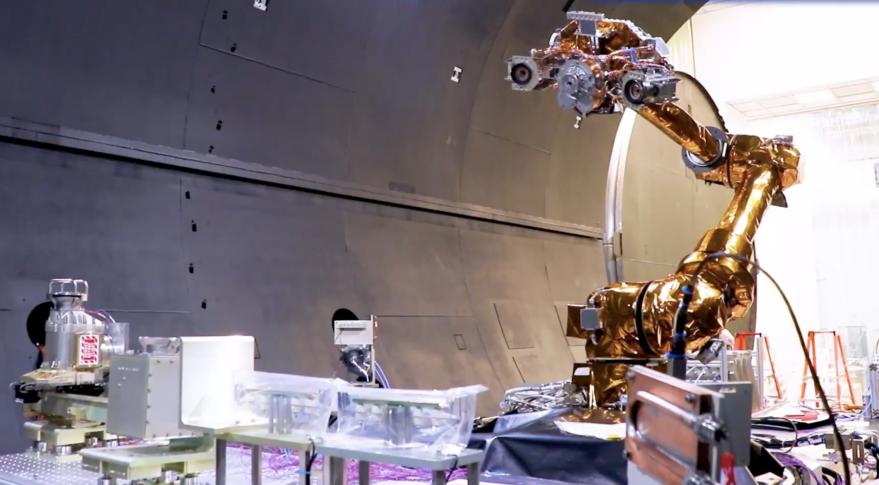The RSGS robotic arm developed by DARPA has passed all major tests and is being prepared for integration with the Northrop Grumman satellite. From 2025, it will be used to service satellites in geosynchronous orbits.

Robotic arm from DARPA
Representatives of the Defense Advanced Research Projects Agency of the US Department of Defense (DARPA) announced that the robotic arm they developed has passed all critical tests. It is based on the Robotic Servicing of Geosynchronous Satellites (RSGS) program and is now awaiting integration with the Northrop Grumman spacecraft.
The goal of the RSGS project is to create an apparatus that could serve satellites in orbit. Back in 2007, an experiment conducted in orbit proved this possibility. The program initially assumed the participation of a commercial satellite operator. In 2017, SSL was chosen for this role.
However, in 2019 Maxar Technologies, which is the parent company of SSL, announced its withdrawal from the project. Therefore, in 2020, Northrop Grumman and its subsidiary Space Logistics became a new partner of DARPA. They have developed the Mission Robotic Vehicle, which will become a platform for placing a robotic arm.
Which satellites will RSGS serve
In general, on each Mission Robotic Vehicle, DARPA will install two of its robotic arms, equipment for checking and calibrating equipment in orbit, ports for storing equipment, cameras and lighting.
The RSGS robotic arm will be launched into orbit at the end of 2024 and should begin its work in 2025. Its main task will be the maintenance of satellites in geosynchronous orbit of the Earth. It has already been announced that its first customers will be the devices of Australia’s largest satellite operator Optus.
Mission Robotic Vehicle should install additional Mission Extension Pods jet modules on the satellites. They will allow the satellites, each weighing two tons, to work for several more years. In addition, when the service vehicle is launched, several more jet modules will be put into orbit. However, it is not reported for the satellites of which companies they are intended for.
According to spacenews.com
Follow us on Twitter to get the most interesting space news in time
https://twitter.com/ust_magazine

